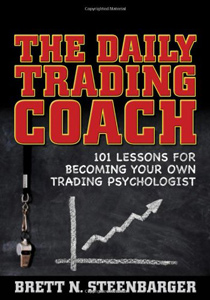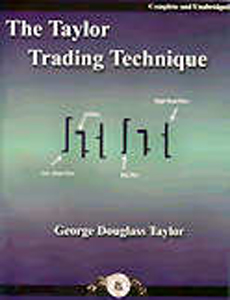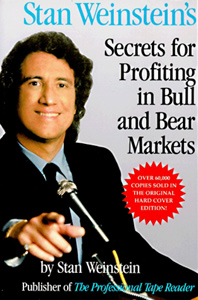Trading
Don’t waste your time by low probability trading. After share trading (or trading other types of markets) you'll learn that some types of trade setups tend to pay off more often while others are duds and end up playing psychology games with your mind and waste your emotional energy. One example of low probability trading is picking tops and bottoms.
So, you've decided to part with some of your cash and invest it into trading stocks. Share trading is like a business. Your primary purpose is to make a profit. You're not a charity freely giving money back into the markets. Like any successful business formulating a business plan, successful traders also need to have a well thought out trading plan. Remember the traditional goal setting maxims: Goals should be SMART: Specific, Measureable, Attainable, Realistic, Timely.
There are many fools trading in the worldwide markets. Trading stocks, forex or commodities anyone can make these dumb trading mistakes. But to be a highly successful trader you must admit to your mistakes and act to fix your previous follies.
Trade Without a Plan
Two percent money management is very important especially when you are daytrading and actively trading the markets. Lets take a look at a tale of two traders with this table. You must apply the two percent rule with due diligence: that’s two percent or die. Examine the case study table below:
There is a book out there about "Random Walk Theory". I haven’t read anything about it but I would presume that the book would shoot down any prospect of a predictable market theorem.
In the stockmarket, for every trade that is buyer and a seller. In a theoretical, highly efficient market: if the seller puts in $50 into the market – the buyer would also take out $50. But we've been told a lie. Trading is a minus sum game. In reality, the seller would be really selling $45 worth and the buyer, gets $45 worth of stock. So where does the $10 ($5 + $5 on both sides) go?
Jerome Kerviel. Rogue Trader. As this case unfolds, more and more information is being revealed. He was the quiet guy with a not-so-impressive education background. Many of his peers may have been picked from the prestigious Grandes Ecoles, the Harvards and M.I.T.'s of France, and wielded advanced degrees in math or engineering. Kerviel came to work with a business school background and started work in the bank in the back office. Can we learn a valuable lesson from this case?
Yet another perspective on "risking a little or risking a lot": Quantity vs Quality trading...
Just a similar thought to last week's post with the forex trading case study discussing the issues of risking a little or risking the lot. Similar concept, just a different perspective or twist.
Are you a fundamental or technical trader? Which ever one you use for your share trading, I'm sure you've felt that the market has some sort of rhythm to it. Just as we know the cheapest days to buy petrol (here in Sydney) are Monday and Tuesday, can the markets reveal some sort of pattern?
Are mechanical systemised trading the answer to your trading woes?
Another brand new blog entry... here's a preview:
- How to Trade Forex and Gold Options
- How to Trade the Gold Price and Profit!
- Forex Trading the EUR/USD Pair € EURO and $ US Dollar
- How to Trade Stock Market Indices S&P500
- How to Trade Crude Oil
- Forex Trading Psychology
- What Are Broker Recommendations?
- Free Tickets to Trading & Investing Seminar & Expo ($18) Brisbane 2013
- Stock Calc App
- All About Warrants
- Introduction to Exchange Traded Funds
- Introduction to Exchange Traded Funds: Features
- Introduction to Exchange Traded Funds: Domestic ETFs
- Introduction to Exchange Traded Funds: International ETFs
- Exchange Traded Commodities
- Australian Stock Scan
- Australian Online Share Trading
- List of Trading Books
- Interesting Thoughts about the Australian Dollar
- What's the Meaning of Hawkish?
- Do You Know How To Use the P/E Ratio
- Trading, Religion and Politics - Do They Have Anything in Common?
- Shares that are Volatile that Double and Half in the Short Term
- Telstra (TLS) T3
- Margin Call by E-mail
- The Cost of Holding a Position
- Lack of Disclosure: Compensation from ASX Listed Company
- Unrealistic Returns and Benchmarks
- CMC Markets Down
- Quality versus Quantity Forex Trading
- Woolworths 1H Sales $30.7bn up 3.2%
Date added 31-01-2013 - ASIC Fines CommBank's CommSec
Date added 25-09-2012 - Industry Super Network Calls to Ban High Frequency Trading (HFT)
Date added 22-09-2012 - NAB Launches Online Share Trading Platform
Date added 19-09-2012 - Reserve Bank of Australia Says 23 Countries Holding AUD
Date added 18-09-2012 - Australia Post Digital Mailbox
Date added 10-09-2012 - Winners and Losers of Trading for Week 2
Date added 16-01-2012 - 2012's First Week of the Best and Worst Traded Stocks
Date added 09-01-2012 - 2011's Last Best and Worst Traded Stocks
Date added 05-01-2012 - Best and Worst Pre-Christmas Traded Stocks
Date added 30-12-2011 - Trading Winners and Losers for Dec. 12-16
Date added 19-12-2011 - Best and Worst Traded Stocks for Dec. 5-9
Date added 13-12-2011 - Top 3 Best and Worst Traded Stocks
Date added 05-12-2011 - ASX Glitch Trading Halt
Date added 27-10-2011 - Worst Trade Stocks (and the Best)
Date added 06-08-2011
Top 150 Public Companies Listed on the Australian Stockmarket as at 29/05/2009
- BHP Billiton
- Westpac Banking Corporation (WBC)
- Commonwealth Bank of Australia (CBA)
- National Australia Bank (NAB)
- Telstra (TLS)
- ANZ
- News Corporation (NWS)
- Woolworths Limited(WOW)
- Woodside Petroleum Limited (WPL)
- Rio Tinto
- Westfield Group (WDC)
- Westfarmers Limited (WES)
- QBE Insurance
- CSL
- Newcrest Mining Limited (NCM)
- Origin Energy Limited (ORG)
- Santos Limited (STO)
- AMP Limited (AMP)
- Macquarie Group (MQG)
- Foster’s Group Limited (FGL)



